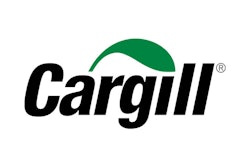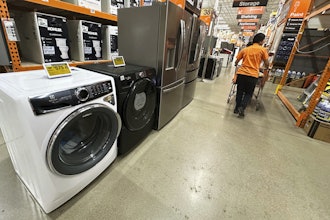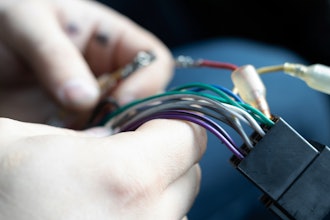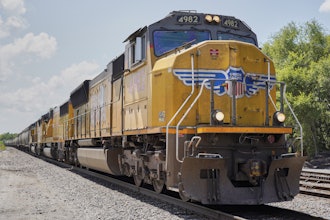Filled with intricate mazes of high-speed conveyor belts carrying yesterday’s garbage, high-tech recycling centers use sophisticated sensors to sort plastic from paper from aluminum. While this technology may streamline sorting, it’s not smart or nimble enough to finish the job.
Behind the scenes, recycling workers continue to sort the materials, making sure cereal boxes don’t mix with soda cans. And because this isn’t just a dirty job, but a mind-numbingly tedious one, there’s particularly high turnover at modern recycling centers, according to the Bureau of Labor Statistics.
But the future of smart recycling is looking brighter. Spider-like robotic arms, guided by cameras and artificial intelligence (AI) — think of it as facial-recognition technology for garbage — are helping to make municipal recycling facilities (MRFs) run more efficiently.
“I think the way we move waste recovery forward is by creating new, innovative ways to process material,” said Thomas Brooks, director of technology for Bulk Handling Systems (BHS), which produces the Max-AI robotic sorter. “That is how we’ll get others involved, and how we’ll get more material recycled.”
Through deep learning technology, robotic sorters use a vision system to see the material, AI to think and identify each item, and a robotic arm to pick up specific items. This new technology is a critical piece in making recycling systems more profitable, said Brooks.
Waste Not
Waste is a massive problem: the world generates 1.3 billion tons of municipal solid waste each year, according to the World Bank. By 2025, that figure is expected to hit 2.2 billion tons.
What’s worse, recycling efforts aren’t helping as much as people assume. For instance, a scant 14 percent of plastic is recycled globally. In the U.S., roughly a third of all waste is recycled, according to the Environmental Protection Agency (EPA), a figure that has been static for a decade.
Conventional sorters have improved the recycling process, but it’s not enough, said Brooks. Sorters identify material composition through infrared cameras using optical sensors, then mechanical sorters, such as blowers, arrange the garbage. But at many MRFs, recycling workers are needed to segregate it further.
After recyclables are sorted, processed and baled, MRFs may sell the materials to brokers or manufacturing plants, which have specific requirements around what kind of materials they’ll take.
For example, a plastic clamshell salad package is made from the same material as a plastic water bottle. To an infrared camera, that clamshell and water bottle look the same, because they’re made from the equivalent type of plastic. However, the MRF often can’t sell both materials to the same broker because they might refuse material with food contamination.
But computer vision systems, the brains that power new robotic sorters, can easily tell the difference between similar materials, said Matanya Horowitz, founder and CEO of AMP Robotics.
Horowitz was a graduate student at CalTech when he realized recycling sorting systems are ripe for the deep learning techniques he was studying.
“You need a computer vision system that understands this is a carton even though it might be covered in dirt, even though it might be torn, or even though it might be half-stuck under some other piece of material,” Horowitz said.
His startup now supplies the Alpine Recycling facility in Denver, Colorado with a robotic sorter.
These advanced recycling sorters use the same computer vision honed by companies to power highly automated manufacturing processes, such as building computer chips. However, sorting paper from plastic can be more complicated.
“A human would say ‘these are the types of features I’m looking for’ and then program those into the algorithms to try and find those features,” said Jeff McVeigh, vice president and general manager of visual computing products at Intel. “The computer vision would then make assumptions that this was the type of object that I cared about.”
This identification process works well when materials are extremely orderly and predictable, but the waste in a recycling center is a jumbled, unpredictable mess — even after it has been sorted mechanically.
Identifying a greasy pizza box from a mangled can, neither of which assumes the same orientation or placement on the conveyor belt more than once, requires building out a large representative dataset. Using thousands of images of trash in different positions can help train the neural network, ultimately allowing it to learn on its own, said McVeigh.
The Future
Though AI is still new to trash sorting, proponents believe it could be used for more than just quality control. MRFs are filled with a maze of conveyors and sorting systems that run in a matrix designed to maximize recycling output based on the average mix of materials received.
In fact, the same computer vision cameras that power robotic sorters could be used to configure the conveyor layout, optimizing the sorting equipment matrix in real-time to match the flow of materials coming into the facility. As the percentage of plastic waste grows, so would the capacity to sort it, but if the amount of paper increases, more paper sorting would come online.
“Ultimately this [AI and robotic application] is where recycling and waste management is going,” said Bryan Staley, CEO of the waste industry research organization Environmental Research & Education Foundation. But, he cautions, these robots have to prove themselves, operationally and financially, before significant numbers of MRFs invest in them.
“I’m a believer,” said Brent Hildebrand, vice president of recycling at Alpine Recycling. “Based on progress that AMP Robotics has made in the last year, I think it’s going to be something MRFs across the country can use.”
Waste management may not seem like a natural industry for the adoption of AI — and indeed, it is too early to know how widely it will be integrated — but robotic sorting promises to equip machines with a depth of discerning that older sorting equipment may never attain.
And it may even someday help municipalities run their recycling facilities more efficiently and profitably. And that’s not trash talk.
This piece first appeared in iQ by Intel.






















